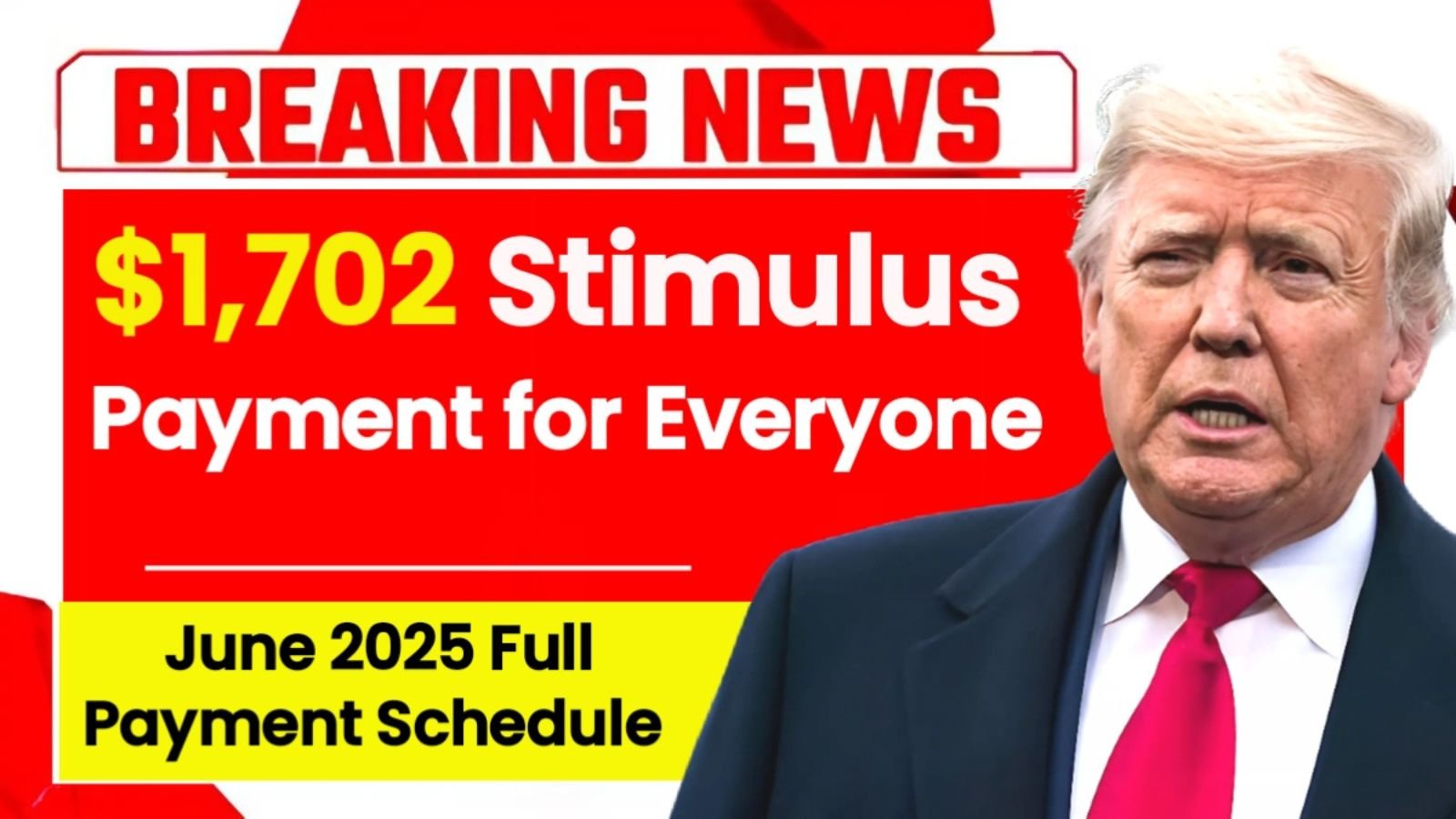In a time of financial strain, rising prices, and economic uncertainty, the U.S. government has launched a critical financial relief effort: a $1,702 stimulus payment. Starting in July 2025, this payment aims to support working families, seniors, veterans, and individuals on fixed incomes who continue to feel the pinch of high costs in everyday life. While the COVID-era stimulus checks may seem like a thing of the past, this new initiative proves that the federal government is still actively working to address the needs of its citizens.
Let’s explore what this $1,702 stimulus payment means, who qualifies, how the money will be distributed, and how to check your eligibility and payment status.
£250 Cost of Living Credit Coming in June 2025 – What You Need to Know
Why the $1,702 Stimulus Payment Was Approved
Though the U.S. economy has gradually recovered since the major shocks of 2020-2022, many Americans are still struggling. Inflation, while cooled compared to previous years, remains stubbornly high in key sectors like groceries, energy, housing, and healthcare. The cost of living has outpaced wage growth for many workers. As a result, the Biden administration, with input from financial experts and policymakers, approved this new round of stimulus aid in 2025.
The $1,702 stimulus payment is not just another blanket payout. It’s a more targeted financial boost meant to support Americans in low- to middle-income brackets. The aim is to reduce financial stress, inject money into local economies, and close economic gaps that widened during the pandemic and its aftermath.
Who Qualifies for the $1,702 Stimulus Payment?
Eligibility for the payment is based on income, filing status, and participation in federal benefit programs. The IRS and Treasury Department have created a system that automates eligibility using 2024 tax returns and benefit program data. If you fall into one or more of the following categories, you may be eligible to receive the full $1,702 payment:
- Single filers with adjusted gross incomes (AGI) up to $75,000
- Married couples filing jointly with combined AGIs up to $150,000
- Heads of household earning up to $112,500
- Social Security recipients, including those on SSDI and SSI
- Veterans Affairs beneficiaries
- Unemployed individuals receiving benefits through June 2025
- Low-income households enrolled in programs like SNAP, Medicaid, and TANF
Families with children or other dependents may receive additional funds per dependent. There is no separate application for the $1,702 stimulus payment; eligible recipients will be automatically identified and processed.
Payment Delivery Timeline: July 2025
The distribution of the $1,702 stimulus payment will occur in three structured phases throughout July 2025. The Treasury Department has designed this rollout to ensure that the funds reach recipients efficiently and securely.
Phase 1: Direct Deposit (July 15 – July 19)
This includes:
- Taxpayers who used direct deposit for their 2024 tax refunds
- Social Security, SSI, and VA recipients with bank account information on file
Funds should appear in recipients’ accounts within 3-5 business days of processing.
Phase 2: Paper Checks (Starting July 22)
Paper checks will be sent by mail to those who:
- Do not have banking details on file with the IRS
- Opted out of receiving electronic payments
Mailing will be conducted in batches based on ZIP codes. Delivery will likely extend over a 2-3 week period.
Phase 3: Prepaid Debit Cards (July 29 – August 5)
Recipients who are unbanked or who have unstable mailing addresses may receive a prepaid Economic Impact Payment (EIP) debit card. These cards can be used for purchases, ATM withdrawals, or to transfer funds to bank accounts.
How to Track Your Stimulus Payment
The IRS has reopened its “Get My Payment” online portal, a tool originally used during previous stimulus rounds. Through this website, users can:
- Check the status of their $1,702 stimulus payment
- Confirm their bank account or mailing address on file
- View the anticipated delivery date of their payment
Those without internet access can visit designated community centers, libraries, or IRS offices for assistance.
Real-Life Impact: What $1,702 Means to Ordinary Americans
For many, the $1,702 stimulus payment is more than just money. It’s the difference between falling behind and catching up. Consider these real-life stories:
Karen Miller, a 70-year-old retiree in Ohio who lives solely on Social Security, said, “After my rent and medication co-pays, I’m often left with barely enough for groceries. This payment means I can refill my inhaler and finally take care of my dental bill.”
Marcus Thompson, a full-time warehouse worker and father of two from Georgia, shared, “Back-to-school shopping used to stress me out every year. With $1,702 coming in, I can buy my kids new clothes, school supplies, and still put something in savings.”
Across the nation, stories like these echo the importance of direct financial assistance in times of hardship.
Beware of Stimulus Payment Scams
Whenever a stimulus package rolls out, scammers follow. The IRS has issued a public warning urging recipients to remain cautious:
- They will not call or text you asking for personal or bank information
- Never provide your Social Security number or password over the phone
- Visit IRS.gov for any official updates or questions
- Be cautious of fake emails or websites that look like government portals
If in doubt, verify all information through official IRS communication channels.
Frequently Asked Questions
Q: Do I need to apply for the $1,702 stimulus payment?
A: No. Eligible recipients are identified based on their 2024 tax return or federal benefits enrollment.
Q: What if I didn’t file taxes in 2024?
A: If you receive federal benefits like Social Security or VA assistance, you are still eligible. The IRS will use existing benefit data.
Q: Will the payment affect my SNAP or Medicaid benefits?
A: No. The stimulus payment is not considered income for the purposes of federal assistance eligibility.
Q: Can I still receive the payment if I moved or changed banks?
A: Yes, but it’s critical to update your address or bank information with the IRS as soon as possible.
Final Thoughts: A Small Check With a Big Purpose
The $1,702 stimulus payment isn’t just about economic metrics. It’s about people. It’s about ensuring that retirees can afford medication, that children have supplies for school, and that struggling families can take a breath without the crushing weight of bills.
As this payment rolls out in July 2025, it’s a reminder that government policy can still make a meaningful difference. While this won’t solve every financial problem Americans face, it’s a step toward financial dignity and recovery for millions.
So keep an eye on your bank account, your mailbox, or your EIP card. Relief is on its way.
Some Important Link
| Download News APP | Click Here |
| WhatsApp Group | Click Here |
| Home Page | Click Here |




